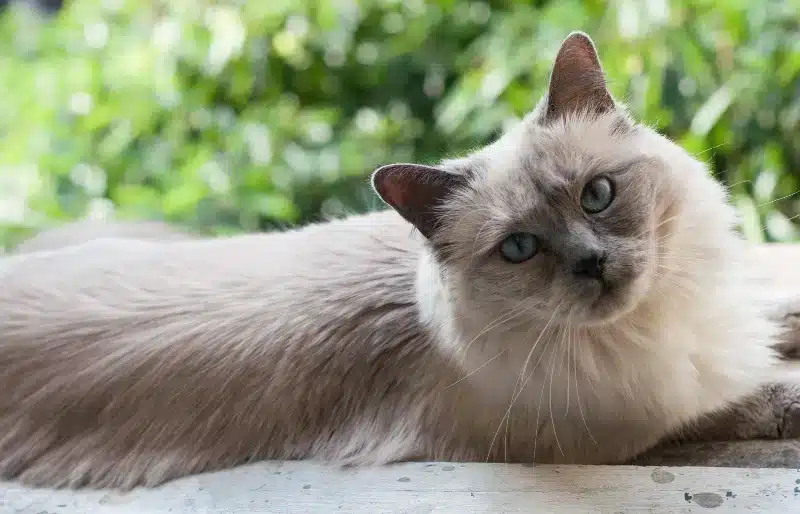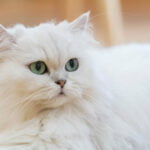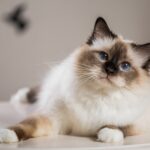Table of Contents
The history of the Siamese cat breed is as elegant and intriguing as the cats themselves. Renowned for their striking blue eyes, sleek bodies, and social nature, Siamese cats have a rich heritage that spans centuries. This comprehensive guide explores their origins, development, and rise to popularity around the world.

Origins of the Siamese Cat Breed
The Siamese cat breed originated in the ancient kingdom of Siam, now known as Thailand. The history of the Siamese cat breed can be traced back to the 14th century, where they were cherished by royalty and often kept in temples by Buddhist monks. These cats were highly regarded for their beauty and elegance.
For more detailed historical context, visit The Spruce Pets.
Introduction to the Western World
The Siamese cat made its first appearance in the Western world in the late 19th century. The breed was introduced to Britain in 1884 when the British Consul-General in Bangkok, Edward Blencowe Gould, brought a pair of Siamese cats back to England as a gift for his sister, Lilian Jane Gould, who would later become one of the founding members of the Siamese Cat Club.
These early Siamese cats, named Pho and Mia, quickly captured the attention of the British public. Their unique appearance and vocal nature set them apart from other breeds, making them a popular choice among cat enthusiasts.
For further reading on the introduction of Siamese cats to the West, check out CFA’s Siamese Breed History.
Development and Standardization
As Siamese cats gained popularity in the Western world, breeders began to standardize the breed. The first Siamese cats exhibited in cat shows were of the traditional or “applehead” type, characterized by their rounded heads and sturdy bodies. Over time, breeders selectively bred for a more refined look, resulting in the modern Siamese, known for their slender bodies, triangular heads, and large ears.
The modern Siamese cat was officially recognized by cat fancier organizations in the early 20th century. In 1902, the Cat Fanciers’ Association (CFA) in the United States granted recognition to the breed, solidifying its status in the cat show world.
Rise in Popularity
The 20th century saw a significant rise in the popularity of Siamese cats. Their striking appearance and engaging personalities made them favorites among pet owners and breeders alike. The breed’s popularity was further boosted by their frequent appearances in media and pop culture, such as the iconic Siamese cats in Disney’s “Lady and the Tramp.”
By the mid-20th century, Siamese cats had become one of the most popular and recognizable cat breeds worldwide. Their unique vocalizations, affectionate nature, and striking looks contributed to their enduring appeal.
Role in Breeding Programs
Siamese cats have played a crucial role in the development of several other cat breeds. Their genetics have been used to create breeds such as the Oriental Shorthair, Balinese, and Tonkinese. These breeds share many physical and personality traits with the Siamese, further spreading their influence in the cat world.
For more on related breeds, visit Vetstreet’s Siamese Cat Information.
Characteristics and Traits
The Siamese cat is known for its distinctive appearance and engaging personality. Here are some key characteristics of the breed:
- Appearance: Slender body, long legs, triangular head, and large ears. Their coat is short and fine, with color points on the ears, face, paws, and tail.
- Eyes: Striking blue almond-shaped eyes.
- Personality: Highly social, vocal, and affectionate. Siamese cats are known for their intelligence and strong bonds with their owners.
Health and Care
Maintaining the health and well-being of Siamese cats involves regular veterinary check-ups, a balanced diet, and plenty of mental and physical stimulation. They are generally healthy but can be prone to certain genetic conditions such as progressive retinal atrophy (PRA) and respiratory issues due to their slender facial structure.
Providing a stimulating environment with plenty of opportunities for play and interaction is crucial for their happiness. Regular grooming is minimal due to their short coats, but they do enjoy the attention and bonding time.
For health and care tips, visit Petfinder’s Siamese Cat Care Guide.
Conclusion
The history of the Siamese cat breed is a testament to their enduring appeal and unique characteristics. From their origins in ancient Siam to their rise in popularity in the Western world, Siamese cats have captured the hearts of cat lovers worldwide. Understanding the history of the Siamese cat breed and their distinctive traits can deepen your appreciation for these elegant and intelligent companions.
Frequently Asked Questions about the History of the Siamese Cat Breed
When did Siamese cats first appear in the Western world?
Siamese cats were first introduced to the Western world in 1884 when a British Consul-General in Bangkok brought a pair of Siamese cats to England.
What are the two main types of Siamese cats?
The two main types of Siamese cats are the traditional or “applehead” Siamese and the modern Siamese. The traditional Siamese has a more rounded head and sturdy body, while the modern Siamese is known for its slender body and triangular head.
How did Siamese cats influence other cat breeds?
Siamese cats have been used in breeding programs to create several other breeds, including the Oriental Shorthair, Balinese, and Tonkinese, sharing many physical and personality traits with the Siamese.
What are common health issues in Siamese cats?
Common health issues in Siamese cats include progressive retinal atrophy (PRA) and respiratory problems due to their slender facial structure. Regular veterinary check-ups are essential to monitor their health.
How can I keep my Siamese cat healthy and happy?
Maintaining a Siamese cat’s health involves regular veterinary care, a balanced diet, mental and physical stimulation, and a loving, interactive environment. Regular grooming, although minimal, can also contribute to their well-being.
Why are Siamese cats so vocal?
Siamese cats are known for their vocal nature, often using their voices to communicate with their owners. Their vocalizations are a part of their social and affectionate personality, making them highly interactive pets.











